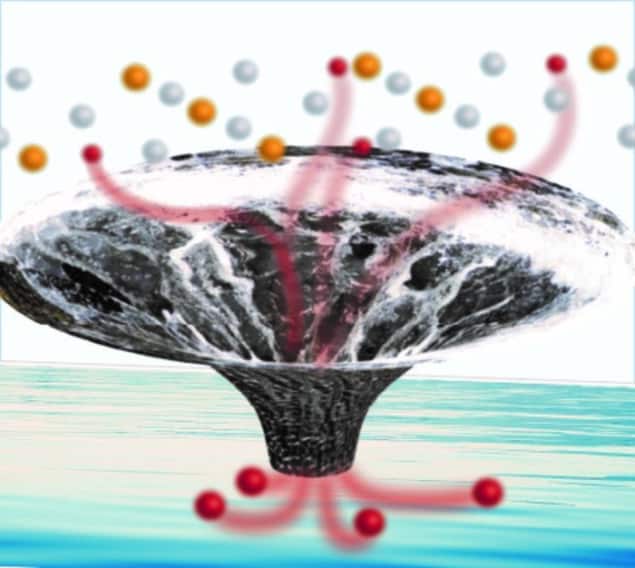
Nobody really understands why cuprates – highly doped copper oxides – are high-temperature superconductors, and researchers in the UK and the Netherlands have now discovered that the materials don’t conform to conventional theories in their metallic state either. Instead, the researchers suggest that cuprates may contain a mix of “strange” and conventional metallic components, but this only poses a further question: which component is responsible for the cuprates’ superconductivity?
Superconductivity occurs when a material loses all resistance to an electrical current below a certain critical temperature. Conventional theory (also known as BCS theory after the initials of its authors) states that at this critical temperature, the electrons in the material overcome their mutual repulsion and join up to form so-called Cooper pairs that travel unimpeded through the material.
Conventional theory does not apply
While this theory holds true for most superconducting materials, it does not apply to the cuprates, which are special in several ways. First, they become superconducting at considerably higher temperatures than other superconductors. Second, they form a new type of metallic state in which their electrons behave in a peculiar way. Unlike electrons in ordinary metals, which travel freely with few interactions and little resistance, electrons in so-called “strange” metals move sluggishly and in a restricted fashion. They also dissipate energy at the fastest possible rate allowed by the fundamental laws of quantum mechanics.
In their experiments, researchers led by Nigel Hussey of the University of Bristol and Radboud University began by painting electrical leads onto tiny single crystals of two families of cuprates: Bi2201 and Tl2201. They then placed these crystals inside a cryostat housed in one of the world’s largest resistive magnets, located at the HFML-FELIX laboratory at Radboud. Next, they measured how the magnetoresistance of the materials varied with temperature – only to find that the data did not fit models based on the conventional theory for metallic transport. Instead of increasing quadratically with temperature, as expected, the increase in electrical resistance was linear.
Signature for incoherent transport
“This result provides strong evidence that the magnetoresistance in these materials does not originate from normal charge carriers (electrons),” Hussey explains. “It instead provides a signature for ‘incoherent’ transport – that is, coming from carriers whose energy is being dissipated at the maximal rate allowed by quantum mechanics.”
The new work also backs up a previous study by the same group in which the data also hinted at the presence of incoherent carriers. The results from both studies suggest that superconductivity in high-temperature superconductors may derive from carriers that show signatures of incoherent transport in their normal (that is, non-superconducting) state, Hussey explains. This explanation is completely different from the coherent carriers that form the foundations of the conventional BCS theory of superconductivity.

Bad metals turn over a new leaf
“For a long time, we thought that we could explain the metallic states of highly doped cuprates using the same theory that we apply to conventional metals like copper, despite the fact they were high-temperature superconductors,” Hussey says. “This work shows that this is simply no longer possible.”
The researchers say they are now investigating how the unusual quadrature magnetoresistance develops across the entire phase diagram of the cuprates they studied to see if they can learn more about where the incoherent effect comes from. “We will also carry out a comprehensive quantitative study of the Bi2201 system in order to study how the superconducting charge carriers and incoherent carriers are empirically correlated,” Hussey reveals.
The research is detailed in Nature.



